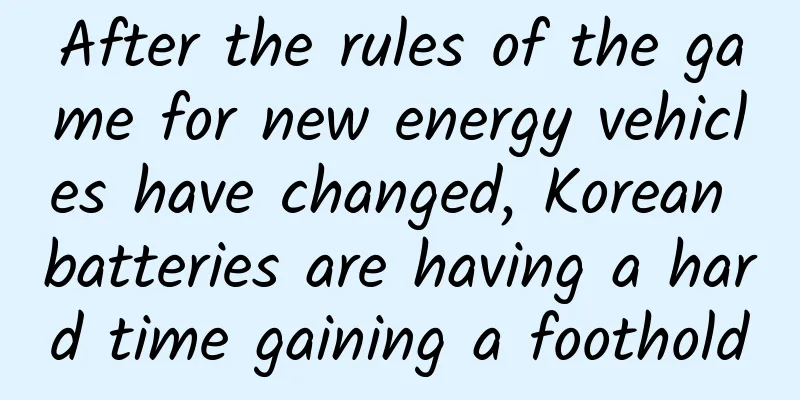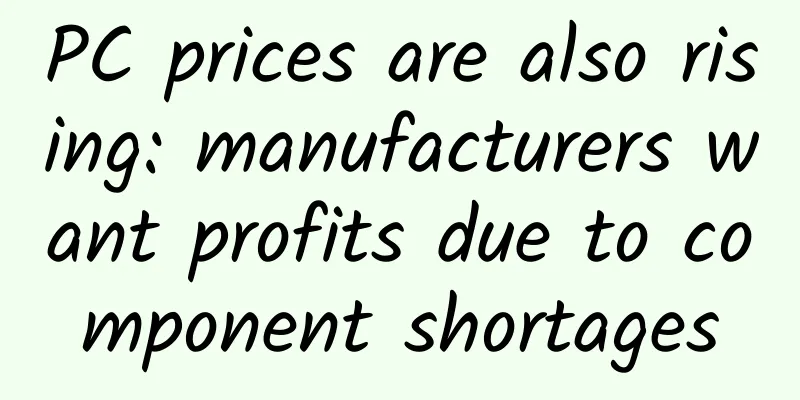After the rules of the game for new energy vehicles have changed, Korean batteries are having a hard time gaining a foothold

|
On March 30, the new energy vehicle battery factory jointly established by South Korea's SK Innovation (hereinafter referred to as SKI) and Chinese enterprises in China announced that it had stopped production. In this competition over batteries, the joint venture Korean battery companies were also hit hard by political policies and restrictions on imported Korean batteries. Just one day later, the Ministry of Industry and Information Technology released the "Recommended Model Catalog for the Promotion and Application of New Energy Vehicles (2017 Third Batch)" (hereinafter referred to as the Catalog). From the latest catalog, we can see that although domestic battery companies have sprung up under the protection of policies, it does not mean that it will be a one-time solution. In order to urge companies to improve their battery technology, the four ministries and commissions announced the 2017 new energy vehicle subsidy policy. In addition to continuing to put forward requirements for driving range, they also put forward requirements for the mass energy density of power battery systems. This requirement not only forces companies to improve battery technology, but also requires some new energy vehicle manufacturers to improve their technology. The devastating blow to Korean ternary lithium batteries When it comes to ternary lithium batteries, one cannot help but think of Korean battery companies. Since the "Automotive Power Battery Industry Standard Conditions" raised the battery specifications, Japanese and Korean battery giants such as Samsung SDI, LG Chem, and Panasonic have not yet been included in the catalog. It is worth noting that the 5th batch of "Recommended Model Catalog for the Promotion and Application of New Energy Vehicles" announced by the Ministry of Industry and Information Technology at the end of 2016 showed an incredible scene: the total number of models changed from 498 to 493 in a second. Up to now, the Ministry of Industry and Information Technology has released four batches of "Normative Conditions" catalogues, with a total of 57 power battery companies shortlisted. However, Japanese and Korean battery giants such as Samsung SDI, LG Chem, and Panasonic have not yet been included in the catalogue, which has greatly affected the development of the power battery business of the above-mentioned companies in China. In fact, since last year, the business of domestic power battery companies including Samsung SDI and LG Chem has been affected to varying degrees by the new energy subsidy policy. Recently, after the business progress of Samsung SDI and LG Chem's domestic power battery companies was hindered, SKI stopped production at the end of last year due to a decrease in battery orders. In addition, there are rumors that LG Chem's power battery factory in Nanjing, China has been shut down. Earlier media reports said that its production line is basically idle and it is discussing selling the project to SAIC. Low-cost electric vehicles affected In addition to the impact on Korean batteries, some domestic new energy vehicle models have also been affected by the policy. According to data analysis by the National Passenger Car Association, A00-class vehicles accounted for 63% of pure electric vehicles in 2015, and A0-class vehicles became the main sales force of pure electric vehicles. However, based on the sales analysis of the first two quarters of 2016, A-class pure electric vehicles are constantly rising and showing explosive growth, reaching about 37% of the pure electric share. Although the sales of new energy vehicles in the first two months of this year have seen a cliff-like growth, it can also be interpreted that the policy has forced the new energy vehicles to move in reverse. According to the relevant provisions of the 2017 New Energy Vehicle Subsidy Policy, the mass energy density of the power battery system of pure electric passenger vehicles shall not be less than 90Wh/kg, and a subsidy of 1.1 times will be given for those above 120Wh/kg. Therefore, those manufacturers who rely on controlling battery costs have to be forced to upgrade and increase their attention to battery energy systems. Even if they do not apply for a 1.1-fold subsidy, they must meet the minimum standard to obtain policy subsidies. Improved power battery density Shortly after SKI announced the suspension of production, the third batch of catalogs released 634 models from 87 companies, a significant increase compared to the second batch of promotion catalogs. Based on the new energy vehicle battery information released in the comprehensive catalog, it can be seen that new energy vehicle companies insist on taking the ternary lithium battery route. Especially in terms of pure electric vehicles, due to the requirements of the mass energy density of the power battery system in the latest subsidy policy, pure electric vehicles equipped with ternary lithium batteries with 120-130 Wh/kg in the third batch of catalogs have become the main models. After all, it is difficult for lithium iron phosphate batteries to get 1.1 times the subsidy, and the actual market competitiveness will be greatly reduced. Similarly, in plug-in hybrid models, lithium iron phosphate batteries are no longer the main players. Except for the first batch of models that use lithium iron phosphate batteries, no plug-in hybrid models equipped with lithium iron phosphate batteries have been released from the second batch to the third batch. Even BYD, a giant that has always insisted on promoting lithium iron phosphate batteries, is also adjusting its battery technology route. For example, the batteries on BYD Qin 100 and Tang 100 were replaced from lithium iron phosphate to nickel cobalt manganese oxide ternary lithium batteries. At present, China's strategic direction for developing new energy vehicles is becoming increasingly clear, the corresponding market size is expanding rapidly, and the requirements for basic technologies and facilities are also increasing. Battery technology has attracted attention in the industry since the early stages of the development of new energy vehicles. The country has established a key research and development plan for "new energy vehicles". When both technology and policies are urging the development of the battery industry, it promotes my country's battery technology to lead the global industry development and lays the foundation for the development of new energy vehicles. As a winner of Toutiao's Qingyun Plan and Baijiahao's Bai+ Plan, the 2019 Baidu Digital Author of the Year, the Baijiahao's Most Popular Author in the Technology Field, the 2019 Sogou Technology and Culture Author, and the 2021 Baijiahao Quarterly Influential Creator, he has won many awards, including the 2013 Sohu Best Industry Media Person, the 2015 China New Media Entrepreneurship Competition Beijing Third Place, the 2015 Guangmang Experience Award, the 2015 China New Media Entrepreneurship Competition Finals Third Place, and the 2018 Baidu Dynamic Annual Powerful Celebrity. |
<<: Ford: Fully autonomous driving won’t be achieved within 10 years
Recommend
Wang Ce VLOG personal short video experience sharing class
Wang Ce VLOG personal short video experience shar...
This is a versatile activity plan!
A universal activity plan , so you don’t have to ...
Application of face stylization technology on mobile terminals
Preface With the explosion of concepts such as th...
In special times, how can the retail industry operate private domain traffic well?
A sudden epidemic has brought community (WeChat g...
Why are fireworks colorful? Fireworks and firecrackers are actually different
Expert of this article: Chu Yuhao, PhD of Beijing...
Yuanfudao Product Analysis
Yuanfudao , as the unicorn company with the highe...
The college entrance examination is tomorrow! What to do if you are anxious before the exam? Take this "trouble-solving kit"!
Tomorrow is the college entrance examination. 12....
World Meteorological Day丨What should you do if you receive a weather warning?
Today (March 23) It is the 62nd World Meteorologi...
How to use the thinking of "user growth model" to dismantle the new media operation framework!
This year, the concept of growth hacking is parti...
Everyone is talking about UGC operation, but do you know what the core of UGC is?
UGC is the abbreviation of User Generated Content...
24 categories of essential tools for new media operations!
To operate new media , one must at least have the...
Unveiled today! What’s different about the National Botanical Garden?
April 18 National Botanical Garden Officially unv...
Can we eat the wild vegetables picked from the green belts?
The weather has warmed up, the trees have started...
The next wave of entertainment: Changhong naked-eye 3D TV mobile phone
With the development of mobile Internet and the c...
Making meat out of nothing, can industrial exhaust gas also be turned into "four dishes and one soup"? ! 丨 Great Power Technology Fan
China's "Sky Eye", Shenzhou spacecr...









